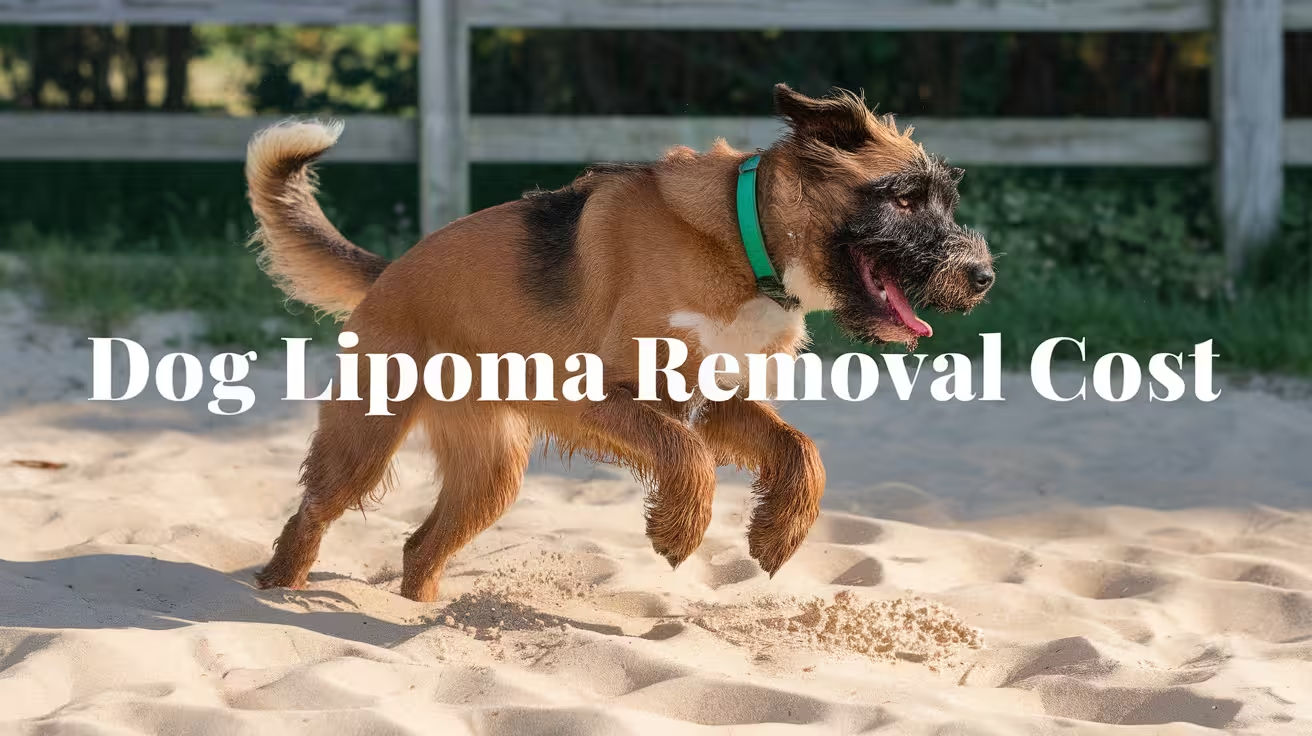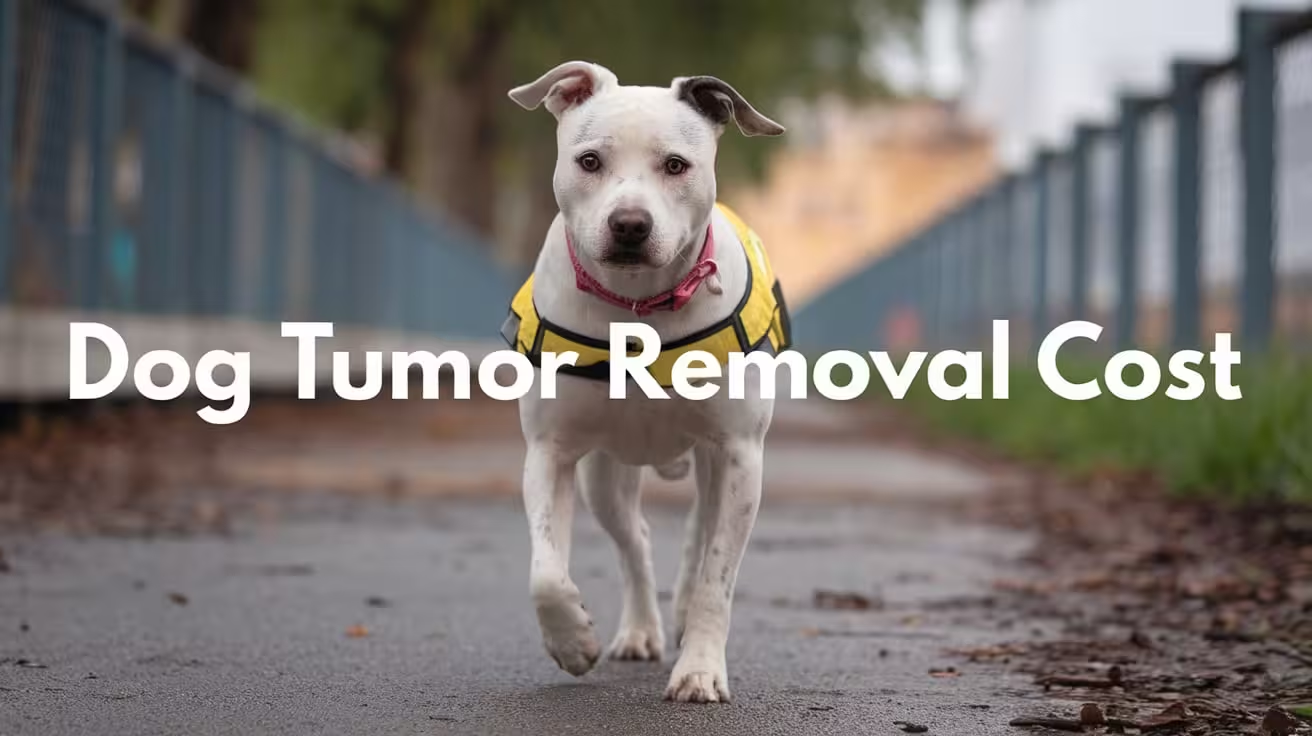Dog Lipoma Removal Cost: Full Price Breakdown
Find out how much dog lipoma removal costs, what factors affect pricing, and when surgery is medically necessary for your pet.

Understanding Dog Lipoma Removal Cost
Lipomas are soft, fatty tumors that develop under a dog’s skin. They are usually benign but can grow large enough to affect comfort or mobility. Many owners choose to remove them when they interfere with daily activity, appearance, or quality of life. Understanding costs helps prepare for both medical and financial planning.
- What Lipomas Are: Fat-based, non-cancerous lumps found mostly in middle-aged and older dogs. They are slow-growing and often appear on the chest, legs, or belly.
- Why Removal Is Considered: Surgery becomes necessary if the lump limits movement, causes irritation, or presses on muscles or organs.
- The Cost Concern: Lipoma removal costs vary depending on the lump’s size, depth, anesthesia needs, and whether advanced imaging is required before surgery.
Knowing what influences lipoma removal pricing allows owners to make informed choices about their dog’s comfort and safety.
Typical Price Range for Lipoma Removal in Dogs
The cost of dog lipoma removal depends on the complexity of the procedure, from a quick surface removal to a more invasive surgery requiring specialized care. Understanding the typical price range helps owners plan both medically and financially before scheduling surgery.
- Simple Lipoma Removal: For small, superficial lipomas under the skin, costs usually range between $200 and $500. These procedures often require local anesthesia and minimal recovery time.
- Moderate to Large Lipomas: Removal of deeper or larger growths, especially near joints or under muscles, typically costs between $600 and $1,200.
- Complex or Infiltrative Lipomas: When a lipoma extends into surrounding tissues or near organs, surgery may require advanced imaging and skilled surgical expertise, raising costs to $1,500–$2,500 or more.
- Additional Medical Fees: Diagnostic tests like biopsies, anesthesia monitoring, or post-op pain management can add $100–$400 depending on clinic standards.
While pricing varies across regions, the total cost mainly reflects surgical complexity, safety measures, and aftercare quality.
Factors Influencing the Cost of Dog Lipoma Surgery
Several factors affect the overall cost of lipoma surgery, from the lump’s size to your dog’s general health. Understanding each helps you anticipate expenses and make informed veterinary decisions.
- Size and Location: Small lipomas under the skin are easier and cheaper to remove than large or deeply seated ones near organs or muscles.
- Depth of Invasion: Surface lipomas need simple excision, while invasive types require longer surgery and possible hospitalization.
- Number of Lipomas: Dogs with multiple fatty lumps often undergo a single surgery to remove several at once, reducing anesthesia cost but extending operating time.
- Age and Health of Dog: Older dogs or those with heart, liver, or metabolic conditions may need additional tests or specialized anesthesia.
- Veterinary Clinic and Surgeon Expertise: Costs differ between general practitioners and board-certified surgeons, with specialty hospitals charging higher fees for complex cases.
- Diagnostic and Aftercare Needs: Pre-surgery imaging, blood tests, and post-op pain management all contribute to total cost.
Each of these factors influences pricing, but also ensures your dog’s safety during and after the procedure.
What’s Included in the Cost: Breakdown of Lipoma Removal Expenses
Dog lipoma removal cost covers multiple stages of medical care — from initial consultation to recovery monitoring. Knowing the breakdown of expenses helps owners understand what they’re paying for and why each step is important.
- Initial Consultation and Diagnosis: Veterinarians start with a physical exam and fine-needle aspiration or biopsy to confirm the lump is a benign lipoma.
- Pre-Surgery Blood Work: Blood chemistry and organ function tests ensure your dog can safely undergo anesthesia.
- Surgery and Anesthesia: The procedure includes anesthesia administration, surgical removal, tissue closure with stitches, and sometimes drain placement for fluid control.
- Post-Operative Care: Costs cover pain relief, antibiotics, wound checks, and protective measures like an e-collar to prevent licking or activity strain.
- Additional Expenses: Imaging such as ultrasound, X-ray, or CT scan may be needed for internal lipomas, and referrals to surgical specialists increase total cost.
This complete breakdown clarifies how veterinary clinics structure pricing, showing that quality care extends beyond the surgery itself to ensure full recovery.
When Lipoma Removal Is Medically Necessary vs Optional
Not every lipoma requires surgery, but some can grow large or cause discomfort that affects your dog’s movement or quality of life. Knowing when removal is necessary helps avoid complications and unnecessary procedures.
- Mobility Limitation: Lipomas near joints or under limbs may interfere with walking or sitting. If your dog struggles to move normally, surgical removal becomes essential.
- Rapid Growth or Size Increase: A fast-growing lump can compress nearby muscles or organs. Such lipomas should be evaluated quickly to rule out malignancy or infiltration.
- Pain or Discomfort: Even benign fatty tumors can cause pain if they press on nerves or skin layers. Removal relieves chronic irritation or tenderness.
- Cosmetic or Preference-Based Removal: Some owners choose surgery for cosmetic reasons or to prevent future discomfort, especially if the lump is large or visible.
- Delaying Surgery Risks: Postponing removal may make surgery more complicated if the lipoma enlarges or invades deeper tissue layers.
Discussing timing with your vet ensures that removal happens for the right medical reasons, not just appearance.
How to Budget and Prepare for Lipoma Removal in Your Dog
Planning financially for lipoma removal helps reduce stress when surgery becomes necessary. Costs can vary widely, so understanding what influences pricing and asking the right questions can help you stay prepared.
- Request Detailed Quotes: Always ask your vet for a written estimate that lists every charge — including anesthesia, diagnostics, and medications.
- Clarify Inclusions and Exclusions: Some clinics quote only surgery fees, while others include follow-up care and pathology testing. Knowing this avoids hidden expenses.
- Explore Payment Options: Many veterinary clinics offer payment plans or third-party financing options to spread out costs.
- Use Pet Insurance: Check if your insurance covers surgical tumor removals; coverage usually excludes pre-existing lipomas.
- Ask Cost-Specific Questions: Discuss whether multiple lipomas can be removed in one session, or if a specialist surgeon will increase the fee.
Budgeting early ensures you’re financially prepared without compromising your dog’s care or surgical safety.
Alternatives and Additional Considerations for Lipoma Management
Surgery isn’t always necessary. In some cases, lipomas can be managed through observation and lifestyle changes, depending on their size and growth behavior. Understanding alternatives helps owners make informed, less invasive decisions.
- Regular Monitoring: Benign, slow-growing lipomas can be left untreated but should be checked during each vet visit for size or texture changes.
- Minimally Invasive Options: Liposuction and laser-assisted removal may work for smaller or superficial lipomas, though recurrence rates can be higher.
- Weight Management: Overweight dogs are more prone to developing multiple lipomas. A lean diet and regular exercise reduce recurrence risk.
- Healthy Lifestyle: Balanced nutrition rich in omega-3 fatty acids supports skin and fat metabolism.
- Pet Insurance Considerations: Lipoma removal may not be covered if the mass existed before the policy started, so confirm details before claiming.
These alternatives are best discussed with your vet to decide whether monitoring or surgical removal offers the safest long-term outcome.
Post-Surgery Care and Hidden Costs of Lipoma Removal
Recovery from lipoma surgery is usually straightforward but requires careful monitoring and follow-up care to ensure healing and prevent complications. Some hidden costs may appear during this phase.
- Recovery Period: Most dogs recover within 10–14 days, but rest and restricted activity are essential to prevent wound strain or reopening.
- Incision Care: Owners must keep the area clean and dry, check daily for redness or swelling, and prevent licking with an e-collar.
- Possible Complications: Minor bleeding, seroma (fluid buildup), or infection may occur, requiring vet rechecks or antibiotics.
- Follow-Up Costs: Suture removal, extra medications, or additional check-ups can add $50–$200 depending on clinic policy.
- Recurrence Management: Though rare, lipomas can regrow in the same spot, and secondary surgeries may increase long-term costs.
Proper aftercare ensures your dog heals quickly and reduces the risk of added medical expenses down the line.
Conclusion
Dog lipoma removal costs vary based on the tumor’s size, complexity, and your clinic’s level of care. While simple removals are affordable, complex cases involving deep or multiple lipomas can be more expensive.
- Major Cost Factors: Size, depth, number of lipomas, anesthesia, diagnostics, and post-op recovery care.
- Decision Balance: Surgery should be based on your dog’s comfort, mobility, and medical need — not only appearance.
- Budget Planning: Request transparent cost breakdowns and explore insurance or payment options to manage expenses.
- Veterinary Discussion: Always consult your vet to assess the best timing, surgical approach, and aftercare plan for your dog.
By evaluating both health priorities and cost considerations, you can ensure your dog receives the right treatment at the right time with full financial clarity.
FAQs
What is the minimum cost I might expect?
For small, simple lipomas located just under the skin, removal may cost as little as $200–$400. This includes basic anesthesia and surgical excision but excludes lab tests or imaging. Prices vary depending on your region, clinic setup, and whether additional diagnostics or medications are required.
Why did the quote for my dog vary so much?
Cost differences depend on the lump’s size, depth, and position, as well as your vet’s experience and the clinic’s surgical setup. Quotes also vary based on whether imaging, biopsy, or post-surgical care is included. Always request a detailed written estimate to compare what each clinic offers.
Will my pet insurance cover lipoma removal?
Most pet insurance policies cover lipoma removal if the lump wasn’t diagnosed before the policy started. Pre-existing lipomas are usually excluded. Always review your plan’s terms for surgical coverage, diagnostic test inclusion, and deductible limits before booking surgery.
Can lipomas come back after removal?
Yes, lipomas can recur, especially if your dog tends to form multiple fatty lumps. New ones may develop in other areas, even after successful removal. Regular check-ups help detect early growths, and maintaining a healthy weight reduces recurrence chances over time.
What if I decide not to remove the lipoma now?
If the lipoma is small and doesn’t affect movement or comfort, your vet may suggest observation instead of immediate surgery. Regular monitoring ensures timely action if the lump changes size, becomes painful, or starts limiting mobility. Non-removal is safe for many stable, slow-growing lipomas.

Get a Free Poster
Enhance your workspace with a high-quality radiographs reference poster, designed for veterinary professionals. This free physical poster will be shipped directly to you—just fill out the form to request your copy.
Step #1
Getting Ready
Ensuring a clean surgical field starts with proper skin preparation. This video demonstrates the best practices for:
- Shaving the patient – Achieving a close, even shave while minimizing skin irritation
- The Dirty Scrub – The initial skin prep step to remove surface debris and reduce bacterial load before the sterile scrub.
Following these techniques helps reduce infection risk and improve surgical outcomes. Watch the video to see how it’s done effectively!
Step #2
Reduce Your Risks
Many surgeons are shocked to find out that their patients are not protected from biofilms and resistant bacteria when they use saline and post-op antibiotics.
That’s Where Simini Comes In.
Why leave these risks and unmanaged? Just apply Simini Protect Lavage for one minute. Biofilms and resistant bacteria can be removed, and you can reduce two significant sources of infection.
Step #3
Take the Course
Preventing surgical infections is critical for patient safety and successful outcomes. This course covers:
- Aseptic techniques – Best practices to maintain a sterile field.
- Skin prep & draping – Proper methods to minimize contamination.
- Antibiotic stewardship – When and how to use perioperative antibiotics effectively.
Stay up to date with the latest evidence-based protocols. Click the link to start learning and earn CE credits!













